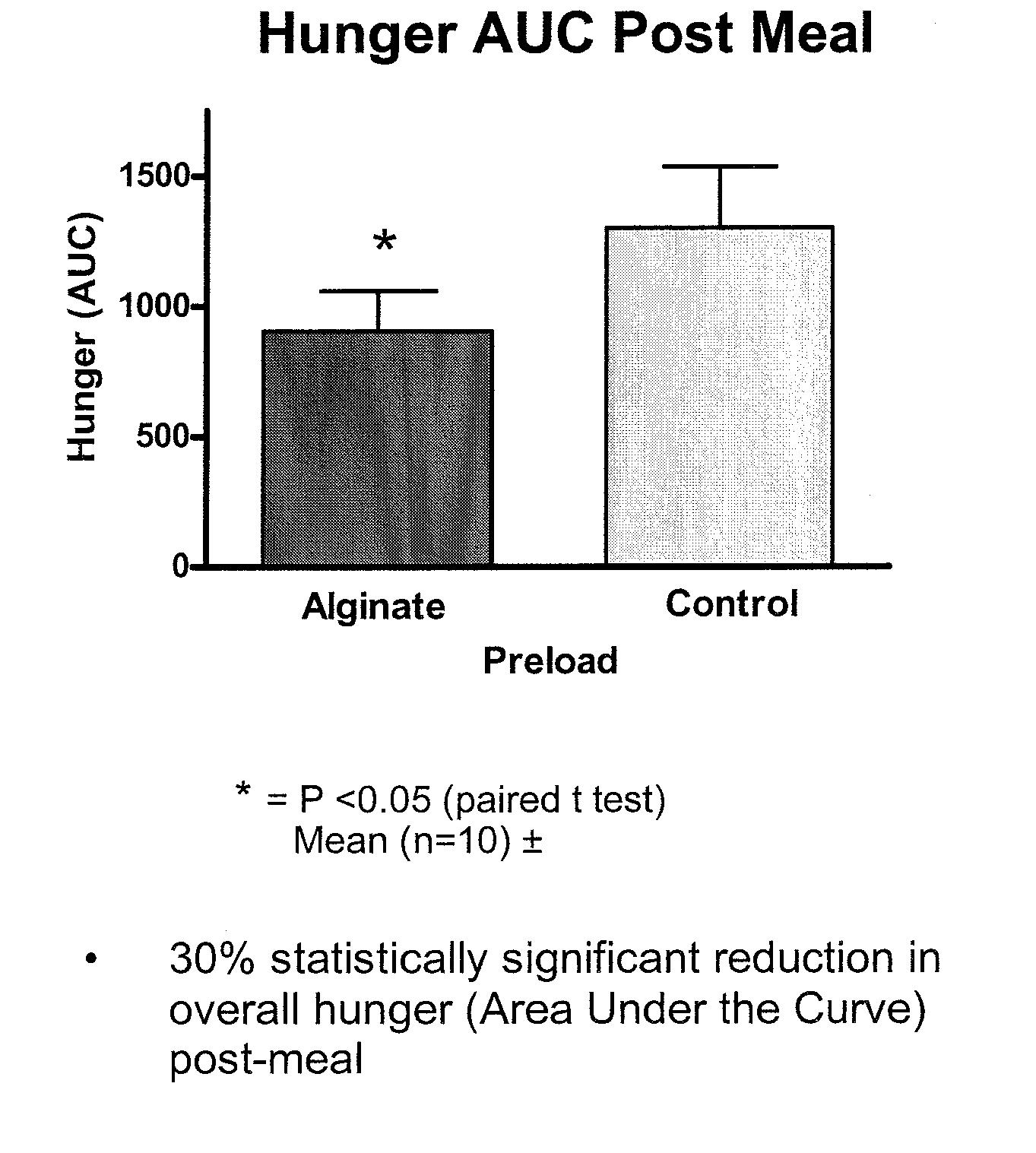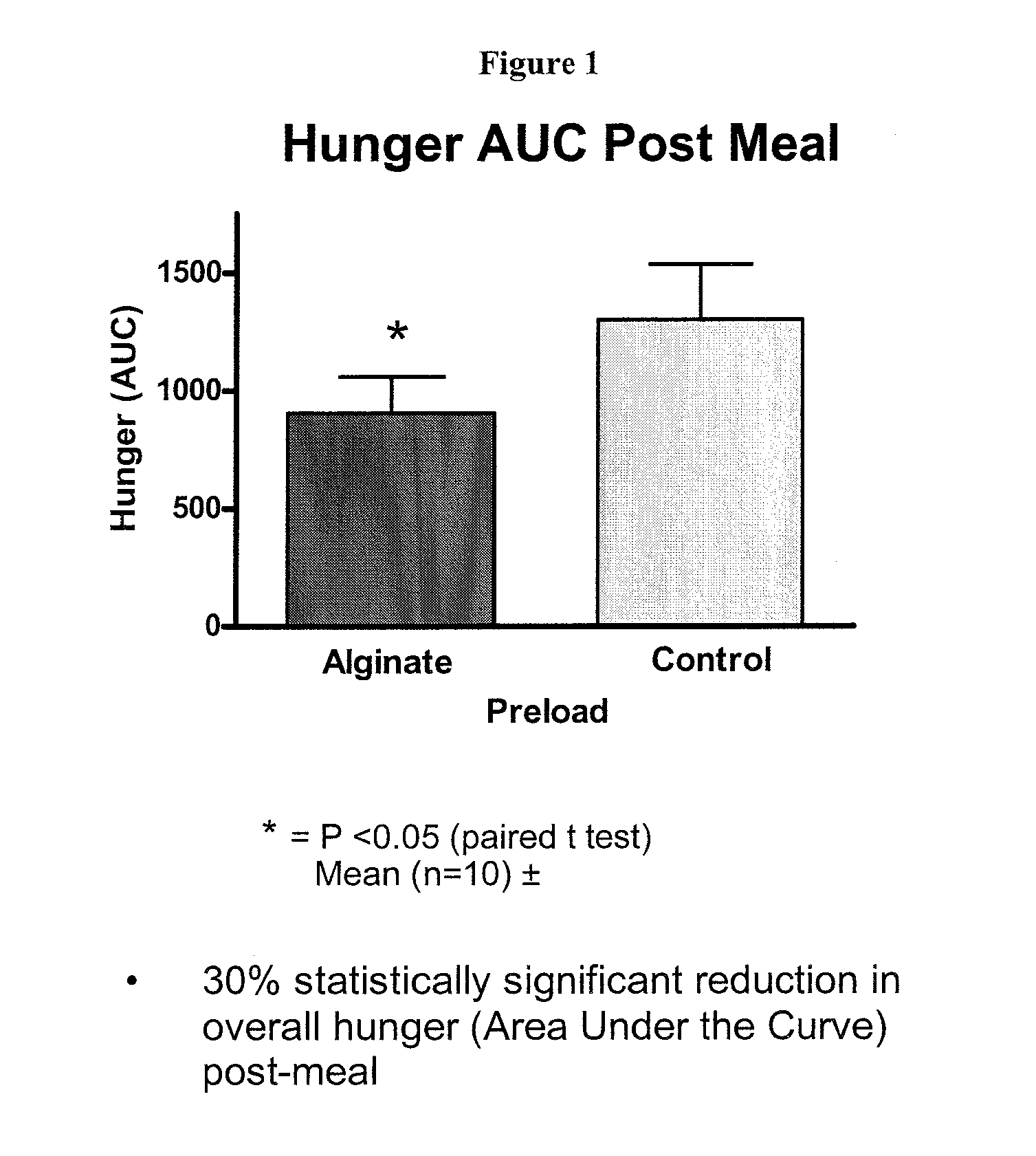Gelling compositions and methods
- Summary
- Abstract
- Description
- Claims
- Application Information
AI Technical Summary
Benefits of technology
Problems solved by technology
Method used
Image
Examples
example 1
[0085] To determine the influence of the acidic component on gelation, two formulations were prepared according to Table 1. Each formulation contained a suitable concentration of an acid soluble calcium salt, such that upon solubilisation sufficient calcium ions would be liberated to cross-link and gel the sodium alginate. The formulation is a dry powder reconstitutable in water and the composition (% w / v) refers to the concentration of ingredient upon reconstitution.
TABLE 1Compositions of Formulations A andB used for gel strength testingCompositionComposition(% w / v)(% w / v)IngredientFormulation AFormulation BSodium alginate (Protanal LHS-1,1.51.5FMC Biopolymer)Calcium carbonate (HuberCAL, OSP0.250.251000FG, Huber Engineered MaterialsGlucono-delta-lactone (USP,1.6—Sigma-Aldrich)Fructose (PhEur, Fluka)77
[0086] The dry powder was reconstituted in 100 mL water. To determine how the reconstituted formulations behaved when in contact with a gastric fluid of reduced acidity, they were ad...
example 2
[0088]
Dry Powder Reconstituted in WaterSodium alginate (Protanal LHS-1, FMC BioPolymer)1.5gCalcium carbonate (HuberCAL OSP 1000FG, Huber0.7gEngineered Materials)Glucono-delta-lactone (USP, Sigma-Aldrich)2.8gMalic acid (USP / NF Sigma-Aldrich)0.05gFructose (PhEur, Fluka)7gSodium bicarbonate (PhEur, Fluka)0.5gFlavour (Vanilla) (prod. No. 10981-31, Givaudan0.24gSchweiz AG)Water added on reconstitutionto 100mL
[0089] A reconstitutable dry powder to be mixed with 100 mL of water. Dry blend all ingredients and package accordingly. The composition remains as a low viscosity drinkable liquid for 10 minutes. Upon ingestion it forms a substantial gelatinous mass in the stomach with a volume of up to 200 cm3. The liquid formulation should be taken prior to meals and may be used in the prevention / management of overweight / obesity or as the base formula for a meal replacement product. The intra-gastric formation of a voluminous mass may induce satiety by initiating the physiological pathways involve...
example 3
[0095]
Dry Powder Reconstituted in WaterSodium alginate (Protanal LHS-1, FMC BioPolymer)1.5gCalcium carbonate (HuberCAL OSP 1000FG, Huber*)0.7gGlucono-delta-lactone (USP, Sigma-Aldrich)2.8gFructose (PhEUR, Fluka)7gSodium bicarbonate (PhEur, Fluka)0.44gFlavour (Vanilla) (Prod. no. 10981-31, Givaudan0.24gSchweiz AG)Water added on reconstitutionto 100mL
*Huber Engineered Materials
[0096] A reconstitutable dry powder designed to be mixed with 100 mL of water is listed in the table above. All ingredients are to be dry blended and packaged accordingly. The composition remains as a low viscosity drinkable liquid for 10 minutes. Upon ingestion it forms a substantial gelatinous mass in the stomach with a volume of up to 200 cm3. The liquid formulation should be taken prior to meals and may be used in the prevention / management of overweight / obesity or as the base formula for a meal replacement product. The intra-gastric formation of a voluminous mass may induce satiety by initiating the physiol...
PUM
| Property | Measurement | Unit |
|---|---|---|
| Percent by mass | aaaaa | aaaaa |
| Mass | aaaaa | aaaaa |
| Mass | aaaaa | aaaaa |
Abstract
Description
Claims
Application Information
 Login to View More
Login to View More - R&D
- Intellectual Property
- Life Sciences
- Materials
- Tech Scout
- Unparalleled Data Quality
- Higher Quality Content
- 60% Fewer Hallucinations
Browse by: Latest US Patents, China's latest patents, Technical Efficacy Thesaurus, Application Domain, Technology Topic, Popular Technical Reports.
© 2025 PatSnap. All rights reserved.Legal|Privacy policy|Modern Slavery Act Transparency Statement|Sitemap|About US| Contact US: help@patsnap.com



